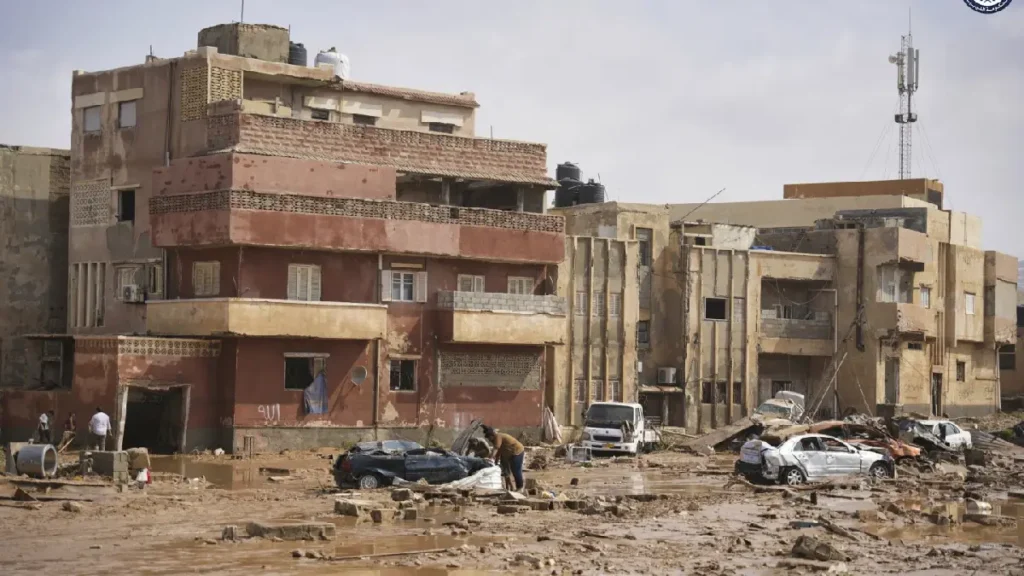Derna, a devastated city in eastern Libya, is grappling with a rising death toll caused by the floodwaters unleashed by Storm Daniel. The catastrophe unfolded as two dams burst on Sunday afternoon, following the storm’s impact, resulting in a destructive surge of water that inundated the city, causing the collapse of buildings and the tragic loss of lives.
As of late Tuesday, the initial death toll reported by authorities in the politically fragmented North African nation stood at a grim figure of at least 2,300 fatalities. Emergency services revealed that over 5,000 people were missing, and approximately 7,000 sustained injuries. Tamer Ramadan of the International Federation of Red Cross and Red Crescent Societies expressed concern, stating, “The death toll is huge and might reach thousands.”
Reports from media outlets cited a spokesperson from Libya’s eastern government’s interior ministry, who stated that “more than 5,200” individuals had lost their lives in Derna. The city, located 250 kilometers (150 miles) east of Benghazi, is characterized by its encirclement by hills and the presence of a normally dry riverbed in the summer, which, after the storm, turned into a destructive torrent of muddy waters, sweeping away bridges and structures.
Derna was home to approximately 100,000 residents, and the devastating flood resulted in the collapse of many multi-story buildings along the riverbed, causing the disappearance of people, their homes, and vehicles in the torrential waters.
With the global community expressing deep concern over the disaster, several nations offered urgent aid and rescue teams to assist the war-torn country. A UN official described the situation as “a calamity of epic proportions.”
In other areas of eastern Libya, the Norwegian Refugee Council reported that “entire villages have been overwhelmed by the floods, and the death toll continues to rise.” The disaster further compounds the challenges faced by communities in Libya, which have endured years of conflict, poverty, and displacement. Hospitals and shelters are expected to be strained by the unfolding crisis.
Oil-rich Libya is still in the process of recovery following years of warfare and instability that ensued after the 2011 NATO-backed uprising, resulting in the toppling and death of the longtime dictator Moamer Kadhafi. The nation remains divided between two competing governments: the UN-brokered, internationally recognized administration based in Tripoli and a separate administration in the disaster-affected east.
Rescue teams from Turkey have arrived in eastern Libya, and the United Nations, along with several countries including Algeria, Egypt, France, Italy, Qatar, and Tunisia, have offered assistance. France, for instance, is dispatching a field hospital and approximately 50 military and civilian personnel capable of treating up to 500 people daily, as announced on Tuesday.

